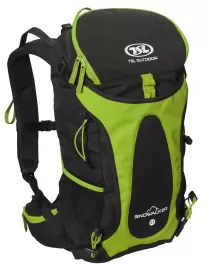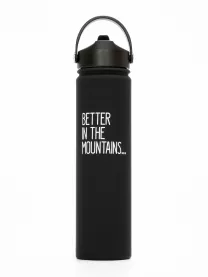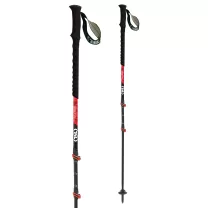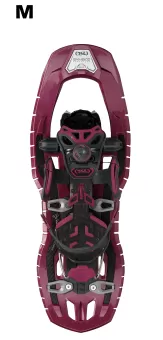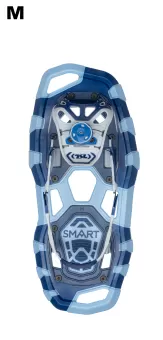
Your Essential Snowshoeing Checklist for the Day!

Plan Your Adventure
First things first: know your destination, the length of your hike, and the forecasted weather conditions. Planning ahead ensures that you have the right gear and are prepared for any surprises that might come your way.
Snowshoeing Gear
Your snowshoes will be the most important piece of equipment for your trek. Make sure you choose the correct size (based on your weight) and the right model for the type of terrain and snow conditions you'll be navigating.
Snowshoes (ensure proper fit and type for terrain)
Boots (insulated, waterproof, and supportive)
Snowshoe poles / trekking poles (with snow baskets to prevent sinking into snow)
Backpack (to carry essentials and extras)
Clothing & Accessories
The clothing you choose is crucial to your comfort and safety. Snowshoeing is an active endeavor, and proper layering helps regulate your body temperature, so you stay warm without overheating. Adopting the "3-layer technique" ensures you can adjust layers depending on your activity level and how the weather changes throughout the day.
Base layers (moisture-wicking): Top and bottom layers to keep moisture off your skin and retain warmth.
NOSC is a brand that combines innovation and sustainability in sportswear. They have developed a unique technology using castor bean seeds, a bio-sourced fiber with exceptional properties. Their garments eliminate the compromise between performance and eco-responsibility, offering anti-odor, thermal regulation, quick-drying, and durability while respecting the planet and its resources.
Insulated jacket: Lightweight but warm insulation for the core.
Snow pants: Waterproof and insulated to protect against snow and cold.
Soft-shell jacket: Wind and water-resistant for added protection.
Gaiters: Keep snow out of your boots and legs dry.
Ski socks: Thick and moisture-wicking socks to keep your feet comfortable.
Ski gloves / mittens: Insulated and waterproof to keep your hands warm.
Thin gloves: For dexterity when handling equipment or taking photos.
Warm hat / headband: Protect your head and ears from the cold.
Neck warmer: Keeps your neck and face cozy, especially during windy conditions.
Survival Essentials
Whether you're on a short trek or a long expedition, it's vital to have survival essentials in your pack to stay safe and comfortable.
Filled water bottles: Stay hydrated, even in cold temperatures.
Insulated thermos: Bring hot drinks or soup to warm up.
Lunch and extra snacks: Keep energy levels high with nutrient-dense food.
First Aid Kit: Be prepared for minor injuries or emergencies.
Sunscreen: Protect your skin from UV rays reflecting off the snow.
Sunglasses: Protect your eyes from glare.
Sun hat: For sun protection, especially at higher altitudes.
Multi-tool / knife: For any unexpected situations.
Credit card / cash: In case you need to purchase supplies along the way.
ID: Always carry identification with you.
Cellphone: Fully charged for emergency situations and navigation.
Optional Extras
These additional items can make your snowshoeing experience more comfortable or enjoyable, but they’re not essential for everyone.
Insulated bum pad: For sitting comfortably on cold surfaces.
Sled : To make the hike more fun!
Small Battery Pack: To charge your devices during the day.
Headlamp: In case you’re out longer than expected or need light on the trail.
Small stove: For a hot meal or drink on the go.
Final Thoughts
Snowshoeing is an incredible way to explore the winter landscape, but preparation is key! By using this checklist, you can ensure that you're fully prepared for whatever nature throws your way. Whether you're a beginner or an experienced adventurer, having the right gear will make all the difference for a safe and enjoyable day.
Written by Shelbey, January 15th, 2025


